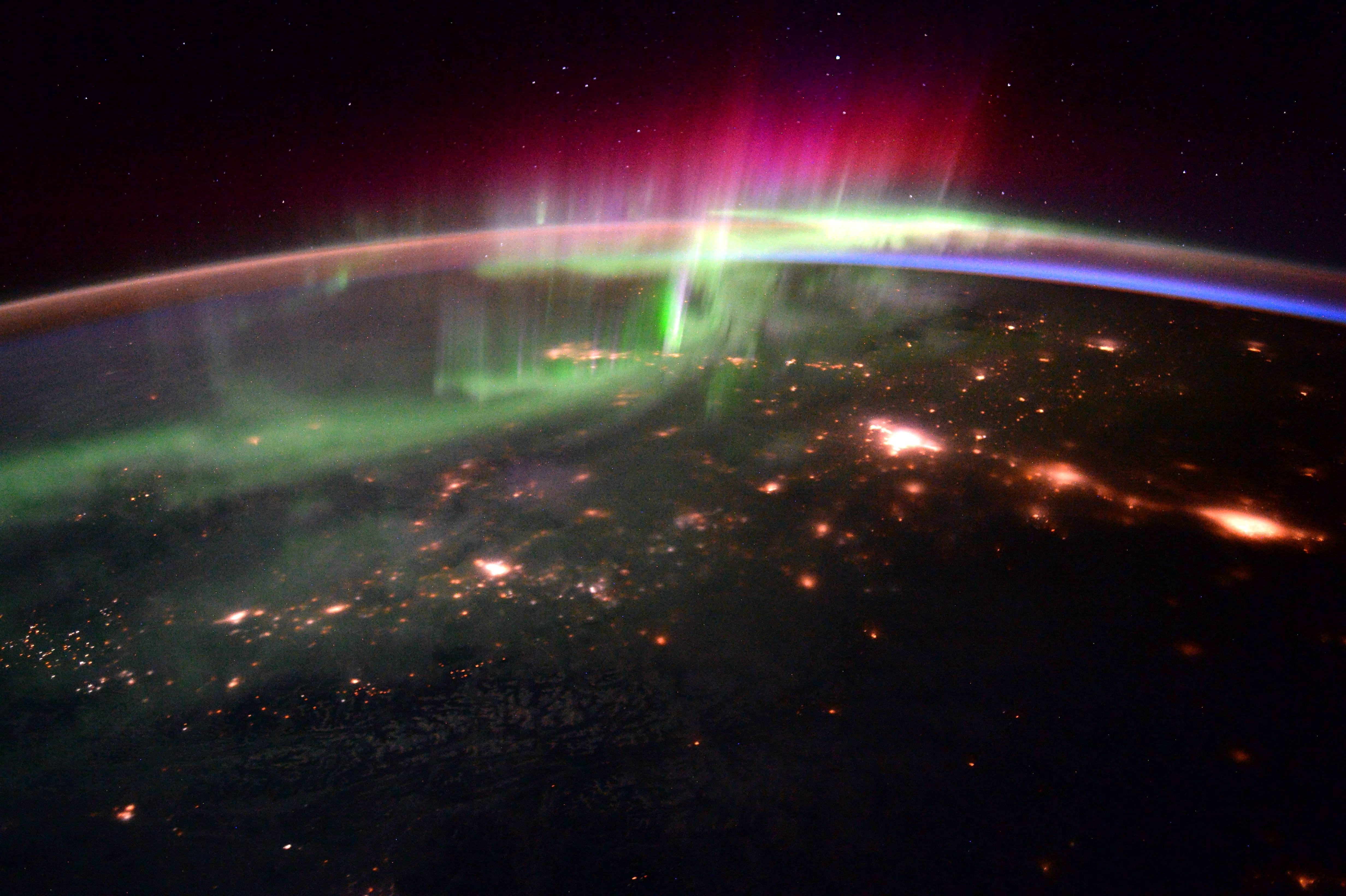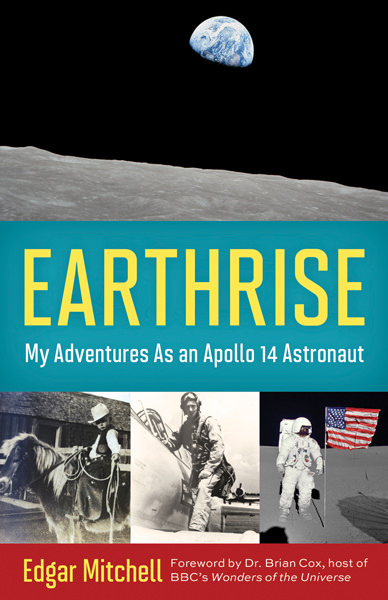I hadn’t been paying attention, so I was pleasantly surprised two nights ago to see the International Space Station (ISS) made a bright pass in the southwestern sky. A quick check revealed that another round of evening passes had begun for locations across the central and northern U.S., Canada and Europe. I like the evening ones because they’re so much convenient to view than those that occur at dawn. You can find out when the space station passes over your house at NASA’s Spot the Station site or Heavens Above.
The six-member Expedition 46 crew are wrapping up their work week on different types of research including botany, bone loss and pilot testing. Plants are being grown on the International Space Station so future crews can learn to become self-sustainable as they go farther out in space. While they work their jobs speeding at more than 17,000 mph overhead, we carry on here on the surface of the blue planet.
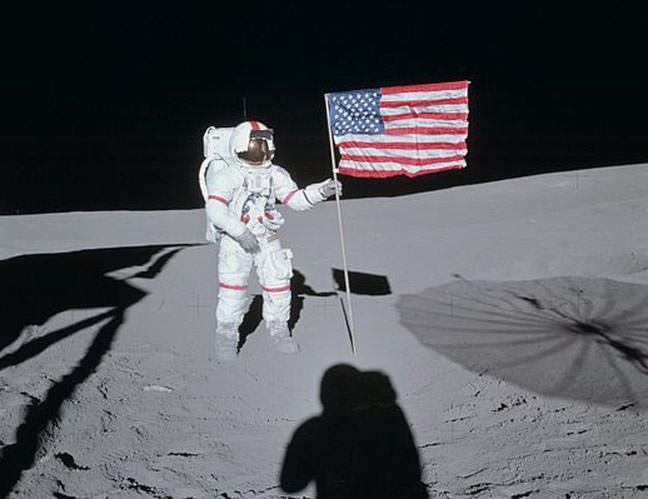
U.S. astronaut Scott Kelly regularly tweets photos from the station and recently noted the passing of Apollo 14 astronaut Edgar Mitchell, who died Thursday at age 85 on the eve of the 45th anniversary of his lunar landing on February 5, 1971. Mitchell was one of only 12 people to walk on the moon and described the experience to the UK Telegraph in 2014:
Relive the Mitchell’s Apollo 14 mission to the moon in 9 minutes and 57 seconds
“Looking at Earth from space and seeing it was a planet in isolation … that was an experience of ecstasy, realizing that every molecule in our bodies is a system of matter created from a star hanging in space. The experience I had was called Samadhi in the ancient Sanskrit, a feeling of overwhelming joy at seeing the Earth from that perspective.”
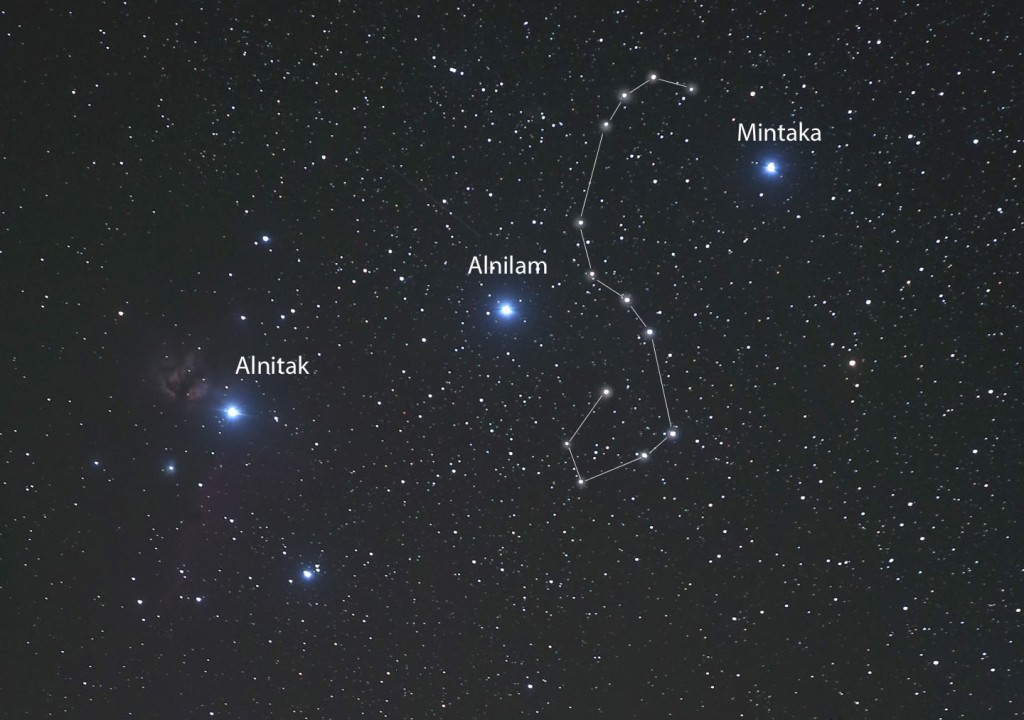
Only a human could stand in so barren and forbidding a place and experience such profound joy. You don’t have to go to the moon to be moved by sights in the night. Just step outside and watch the ISS glide by or grab a pair of binoculars and aim them at Orion’s Belt. Orion stands due south around 8 o’clock in in mid-February practically shouting to be looked at.
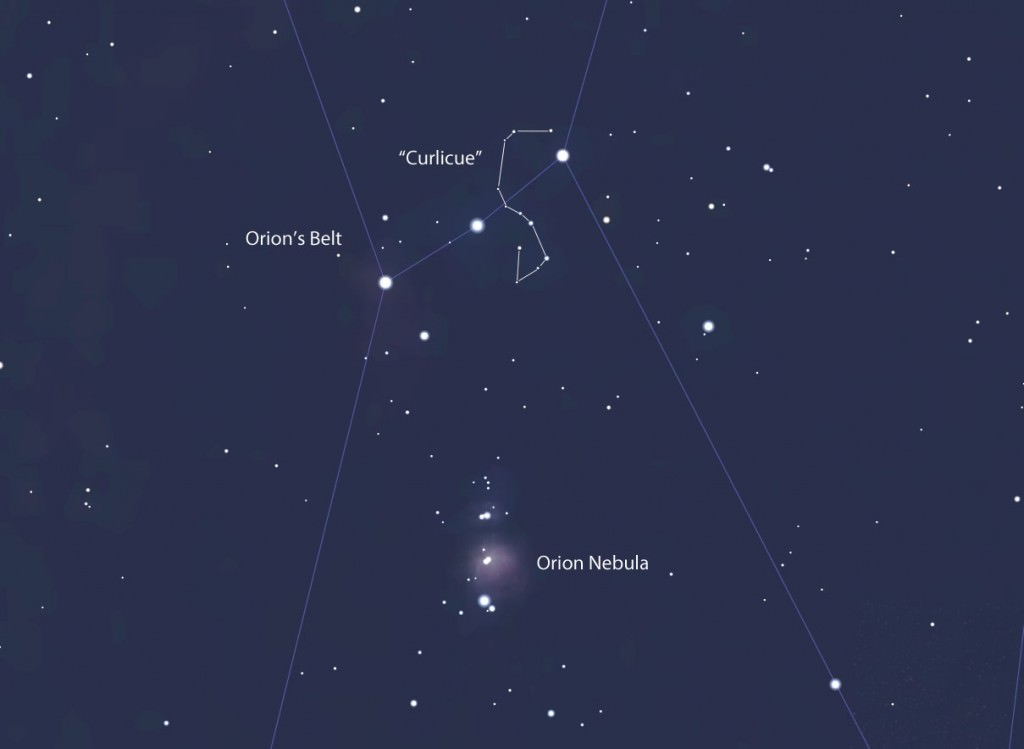
The Belt is lovely enough, but its surroundings glitter with stars just below the naked eye limit, in particular a little curlicue or “S” between Alnilam and Mintaka composed of 6th and 7th magnitude stars. Look for it in any pair of binoculars and don’t stop there. Take a few minutes to sweep the area and enjoy the starry goodness about then drop a field of view south for a look at the Orion Nebula. Inside this fuzzy spot 10 light years across and 1,350 light years away, hundreds of new stars are incubating, waiting for the day they can blaze forth like their compadres that make up the rest of Orion.
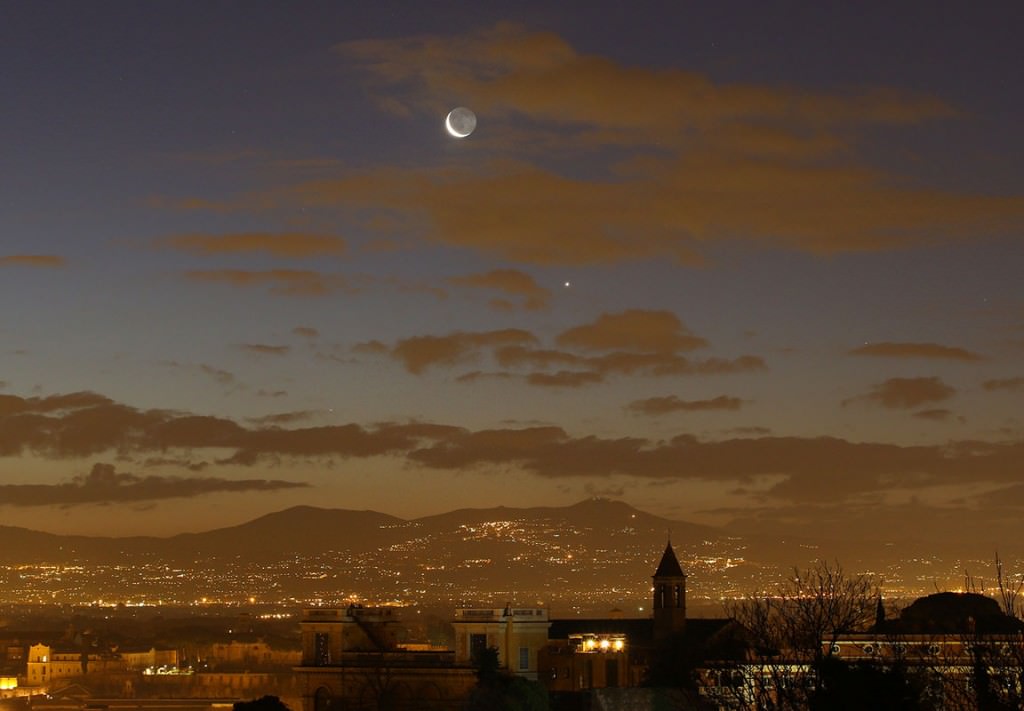
After touting the advantages of evening sky watching, forgive me if I also direct you to the morning sky and potential sleep loss. Although the waning crescent moon has now departed the scene, the wonderful alignment of Mercury, Venus, Saturn, Mars and Jupiter remains visible in the coming week even as Mercury slowly sinks back toward the eastern horizon. If you haven’t seen this “gang of 5”, set your alarm for a look starting about an hour before sunrise.
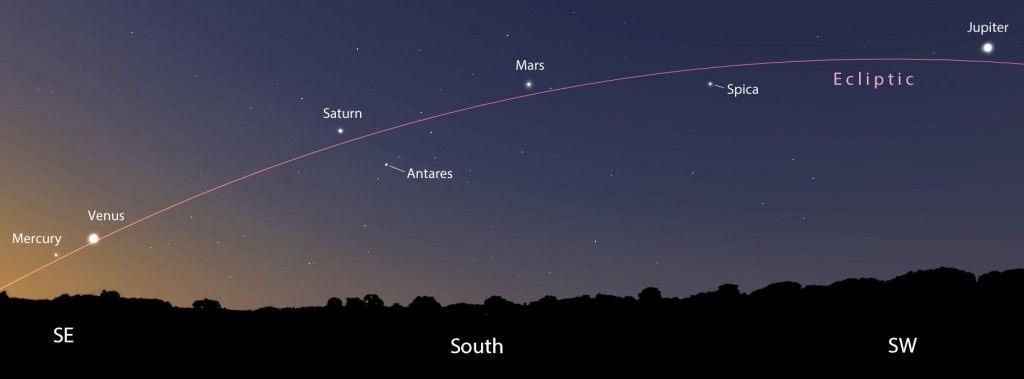
Find a location with as wide open a view as possible of the southeastern horizon. Jupiter, Mars and Saturn are plenty high up at that time and easy to spot, but Venus and Mercury hover only 5°-10° high. Both will pose no problem if you can get the trees and buildings out of the way! By the end of the coming week, Mercury will become challenging and then slip away.
Clear skies!

